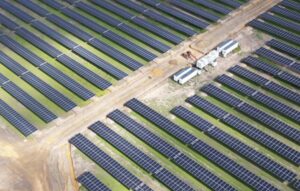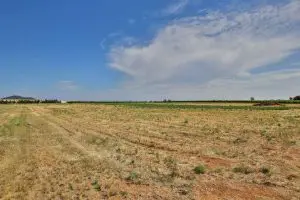South Australia’s big batteries collected a windfall from frequency and ancillary services revenue in the first quarter, mostly as a result of the transmission failure that caused the state’s grid to operate as an effective island for more than two weeks, with the three big batteries playing a crucial but mandated system security role.
According to new data from the Australian Energy Market Operator, the three grid scale batteries – Hornsdale, Dalrymple North and Lake Bonney – shared revenue of more than $50 million in the March quarter, while across the main grid batteries revenue jumped substantially to $64 million, dwarfing the earnings of the larger but less agile pumped hydro storage installations.
 By way of comparison, the battery storage net revenue in the first quarter of this year is more than three times the record revenue from the December quarter, and more than six times the revenue of the first quarter of 2019.
By way of comparison, the battery storage net revenue in the first quarter of this year is more than three times the record revenue from the December quarter, and more than six times the revenue of the first quarter of 2019.
The data is included in AEMO’s Quarterly Energy Dynamics report, which gives fascinating insights into the operation of the main grid. The overall findings, including a record low in emissions from the main grid, and the lowest average wholesale prices in four years, are covered in this separate story. See Wind, solar help push grid emissions to record low, prices to four year low.
The March quarter was an eventful one, challenged by heatwaves, bushfires, and the storms that tore down the main transmission link from Victoria to South Australia, and then the impact of the Covid-19 lock-down which had an impact on demand.
AEMO said that battery net revenue increased by 221 per cent to reach $64 million, its highest level on record by a significant margin.
 Pumped hydro net revenue rose from $0.3 million to $13 million, driven by increased energy arbitrage value (buying low and selling high) as these plants took advantage of event-related price volatility. The graph above shows how the Shoalhaven pumped hydro facility, owned by Origin Energy, cashed in on January 31.
Pumped hydro net revenue rose from $0.3 million to $13 million, driven by increased energy arbitrage value (buying low and selling high) as these plants took advantage of event-related price volatility. The graph above shows how the Shoalhaven pumped hydro facility, owned by Origin Energy, cashed in on January 31.
The batteries, however, focused on the FCAS market, receiving $50 million in the South Australia separation events, and just $2.4 million for arbitrage revenue. That number was steady from the previous quarter, and most of it was earned in just two days with high spot volatility, on January 30 and 31 (when the separation occurred).
It wasn’t just a money-making operation for the batteries, however. AEMO has already highlighted the key role the batteries played in holding the grid together in the immediate aftermath of the transmission line failure, and its front-line role in securing energy security in the 18 days that the South Australia grid was operating as an effective island.
Batteries were not the only technology to benefit from the high FCAS charges from the South Australia separation event, with gas generators pocketing $125 million from the increased charges, although some were focused in different FCAS markets (there are eight in total) than the batteries.
But, of course, whenever there are winners in the market, there are inevitably losers.
According to AEMO, the costs of the FCAS was shared by retailers ($66 million) and by generators ($161 million). AEMO notes that many wind farms sought to dodge hefty FCAS fees by bidding up their prices to high levels – to ensure that they were not dispatched.
The graph above to the left shows the high bidding of above $1,000/MWh (in red), and the graph to the right shows the drop off in wind generation as FCAS prices surged on February 12 to near the market cap of $14,500/MWh for two hours.
“This led to 11 of 14 online South Australian wind farms self-curtailing output due to high FCAS liabilities, which resulted in a sudden and unforecast reduction in wind output (Figure 38),” AEMO noted.
Some operators were lucky. Infigen Energy has previously noted that while its Lake Bonney wind farm output was curtailed by the outage, the windfall from its Lake Bonney battery (pictured above) more than offset that lost revenue.
RenewEconomy and its sister sites One Step Off The Grid and The Driven will continue to publish throughout the Covid-19 crisis, posting good news about technology and project development, and holding government, regulators and business to account. But as the conference market evaporates, and some advertisers pull in their budgets, readers can help by making a voluntary donation here to help ensure we can continue to offer the service free of charge and to as wide an audience as possible. Thankyou for your support.









